Growing Organic Vegetables in Greenhouse
Monsoon is soon going to hit us and my friends it does come along pricey vegetables and you won’t get your favorites one in your cart
How would you like to grow healthy and delicious organic vegetables in your own kitchen garden in any season at minimal cost? Here are we present greenhouse planting guide and stepwise suggestions for growing vegetables in a greenhouse year-round with your own greenhouse.
A guide to growing Organic Vegetables in Greenhouse
A greenhouse is a great asset to achieve a successful organic garden project it facilitates gardeners to make the most use of the sun. Even the smallest, unheated structure will allow gardeners to go beyond the seasons and produce good crops of a wide range of vegetables o their own.
Difference between Polyhouse and Greenhouse
Let’s start with clearing a common confusion i.e. difference between Polyhouse and Greenhouse
In simple one line Polyhouse is a type of greenhouse the difference lies in the cladding material. A greenhouse is a broader term and Polyhouse is one type of greenhouse where cladding material is made up of polyethylene
Polyhouse is an inflated structure shielded with UV Film in which required light intensity, heat, and humidity is optimally preserved for plants. It is a structure under which gardening is possible to round the year and also in adverse weather conditions. The solar radiation falling on it passes through it and the thermal energy inside the greenhouse gets trapped, which is emitted by the objects that are kept inside, this phenomenon is commonly called as “greenhouse effect” from there is name is originated.
The greenhouse is most suitable for the home gardening purpose as it cost-effective than Polyhouse
The durability of the Polyhouse is much more in comparison to other types of Greenhouse.
Advantages of Greenhouse gardening
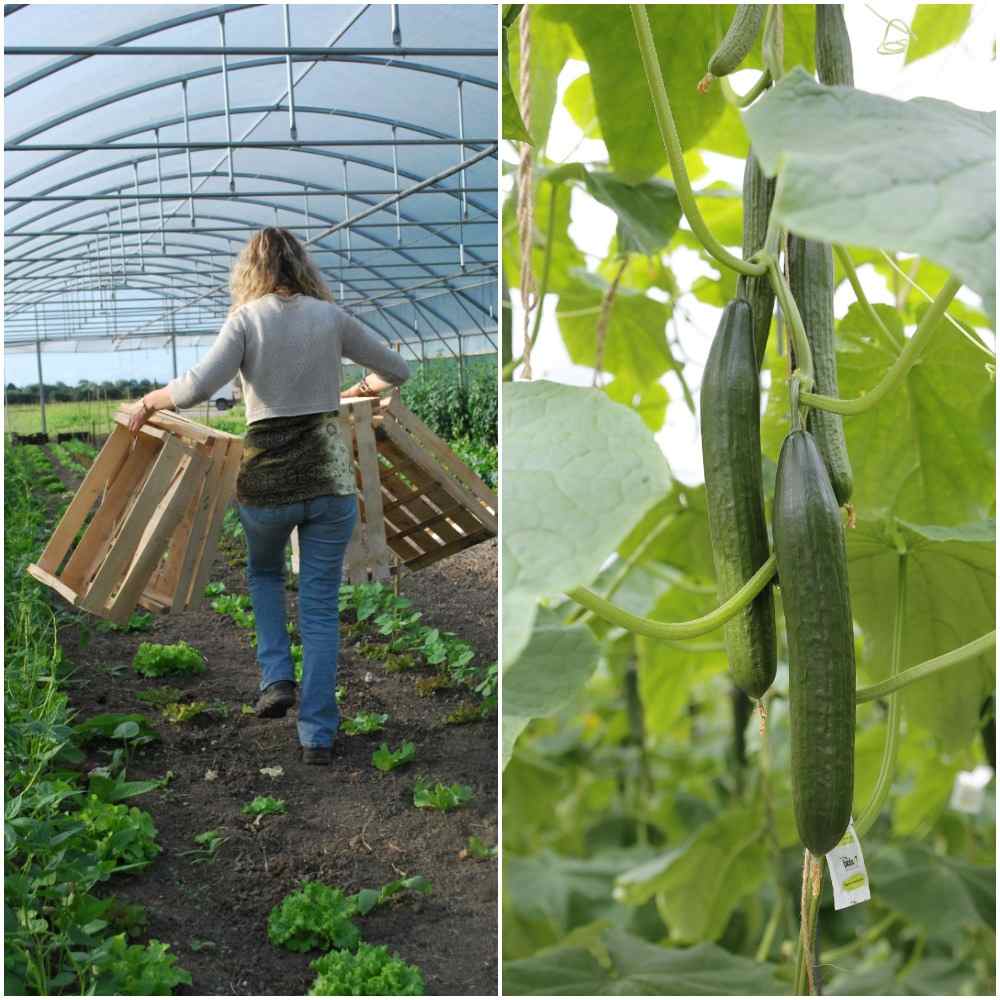
The yield can go about 10-12 times higher than that of usual outdoor gardening depending upon the type of greenhouse, type of crop planted, and environmental control facilities.
Ideally, it is well suited for vegetables and flower crops.
You can get year-round production irrespective of their growing season.
Disease-free and superior transplants can be produced constantly.
The water requirement of crops is very limited and can be easily controlled.
Maintenance of stock plants and grafted plantlets can be done means you reap the fruit of your hard work along with fun experimentation.
Modern techniques such as Hydroponic (Soil-less culture), Aeroponics, and Nutrient film techniques are also possible under greenhouse cultivation which is a common answer for how to grow organic vegetables indoors
It makes you utilize your area or property otherwise abandoned
You can grow plants undisturbed from biotic and abiotic factors of environment which mean more yields
Important points to be considered to become successful in Greenhouse gardening
Before deciding to start greenhouse gardening, you have to consider the following point to become successful in greenhouse gardening
Site: The closer to the house or garden your greenhouse is constructed, the more you are likely to make use of it. Also, think about access to electricity and water
Look for a leveled area with utmost exposure to the sun. If possible, find a site where the greenhouse will be getting at least 6 hours of direct sunlight every day during the winter season. If you don’t have an area with adequate sunlight, grow lights can be added to compensate for it.
In case if you miss this: Growing Cherry Tomatoes Hydroponically.
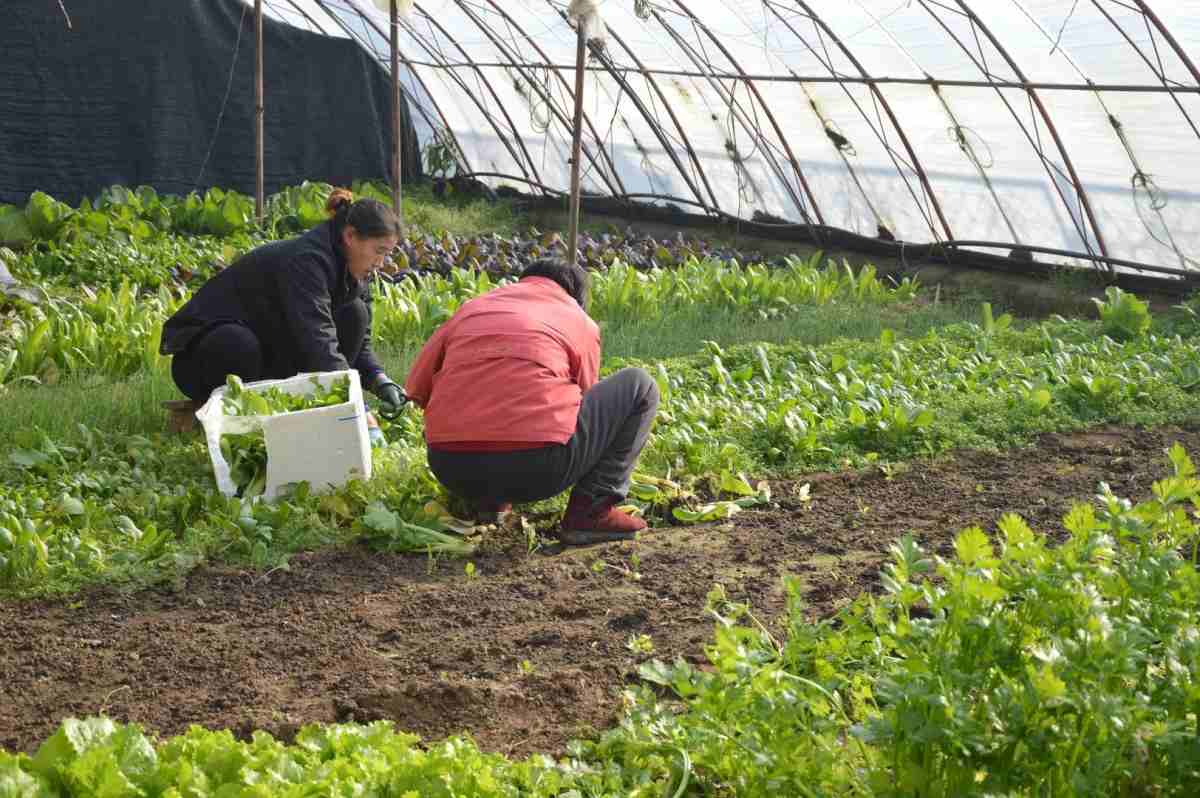
You must select greenhouse depending upon your budget, choice of crops to be grown and facility you wish to include
Consult a reliable service provider for setting up the greenhouse many greenhouse construction companies available in the market contact them, go through their greenhouse business plan and check past company projects (work quality) & negotiate for the greenhouse construction rate.
You can also apply for a government subsidy if the cost grows very high.
Good water quality must be continuously available.
The selected place should be pollution-free this becomes more vital when you are going for organic gardening.
The place should be large enough to accommodate everything related to gardening be it sowing, irrigation, and harvesting.
The drainage of the water should be excellent and channels must be marked beforehand.
Do’s and Dont’s of growing Organic vegetables in the Greenhouse
Following are the tips for organic vegetable gardening for beginners
When practicing organic gardening you must pursue strict guidelines. Organic plants and soil material should not make contact with any building materials that could endanger their organic status, for example, wood treated with prohibited substances.
You may also produce both organic as well as non-organic plants in the same greenhouse if space allows, but in any way, you can’t let the non-organic plants and growing materials contaminate the organic ones in any form. Protecting against contamination can consist of installing partition that separates the two areas and a different ventilation system that also avoids cross-contamination
Organic farming is a system that excludes the use of synthetic fertilizers, pesticides, and any kind of growth regulators. Organic farmers rely a lot on crop rotations, crop residues, animal manures, legumes, green manures, and organic wastes to feed the soil and supply required plant nutrients. Insects, pests, weeds, and other diseases are managed by mechanical cultivation, and cultural, biological controls.
No single fertilizer will supply all of the essential elements required, but a combination of organic products can be formulated. Liquid fertilizers can be applied through specialized irrigation lines by a technique known as fertigation which is a common practice in greenhouse production. Fertigation can offer supplemental doses of these nutrients, especially at critical periods.
Variety selection of plants/seeds
Variety or cultivar selection plays a significant role in greenhouse vegetable production. Cultivars that are disease resistant, insect –pest resistant, and having the ability to perform well under greenhouse climatic conditions should be preferred.
Greenhouse vegetable gardening system
You can produce greenhouse vegetable plants straight in the soil within the enclosure, but container gardening is a more resourceful use of space. You can take benefit of all three dimensions by introducing planters on shelves, using trellis systems for vining plants and hanging planters for the smaller vines, for example, cherry tomatoes and strawberries.
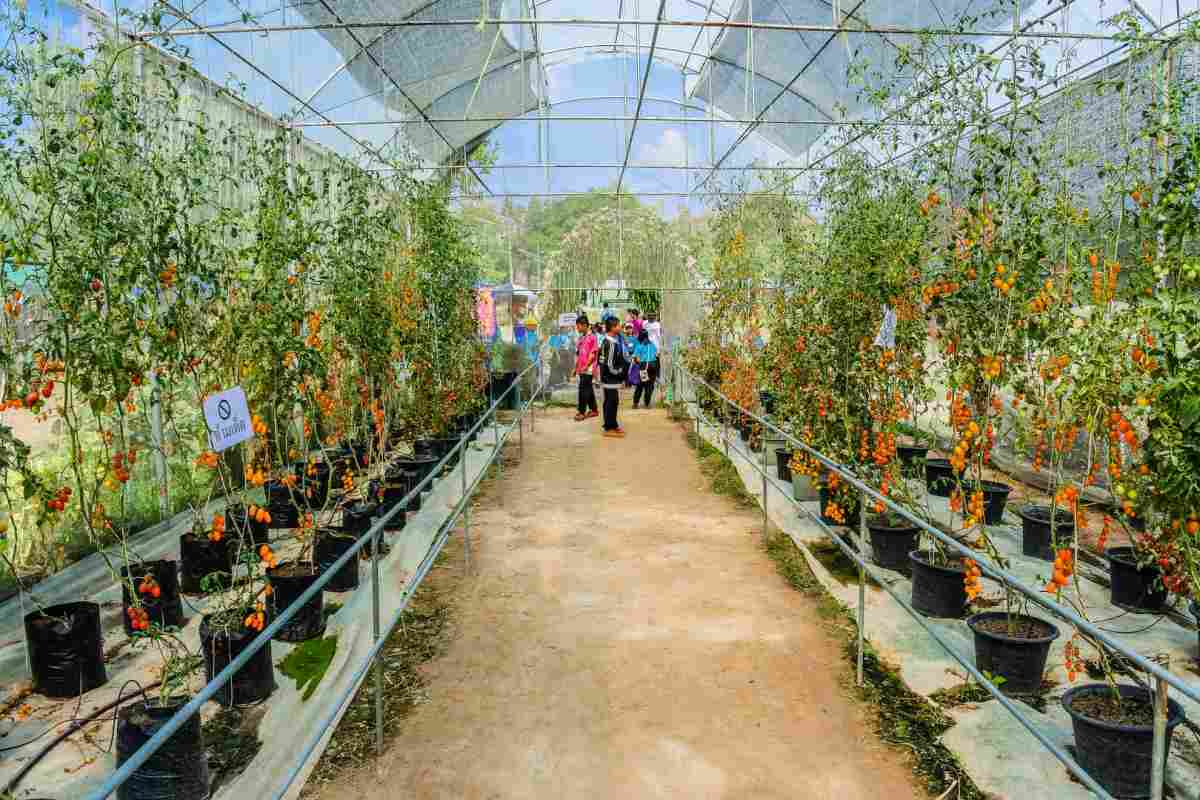
Greenhouse production methods and organic gardening techniques suitable for organic production are soil culture, bag culture, vertical towers, and shallow bed culture.
Soil culture
In soil culture, also famed as ground culture, in this system vegetables are raised on level ground as well as in mounded beds. Soil culture is much more popular with organic growers.
Bag culture
In bag culture, plants are grown in a soilless medium enclosed in lay-flat or upright polyethylene bags and fed with liquid fertilizers through drip irrigation lines. Growing media can be peat/vermiculite, sawdust, Rockwool, or mixes of any of those. Bag culture is suitable for the production of upright and vining crops such as tomatoes, cucumbers, and peppers. Bag culture has now become the favored method of greenhouse vegetable production. One difficulty with bag culture is the prospective for excess fertilizer solution to leak out of the drainage holes in the bags and into the greenhouse soil causing a mess.
Vertical towers
A vertical tower is a form of bag culture. Long bags filled with growing media are hung from support wires or beams, and plants are placed in slits or holes prepared on the sides of the bag. The property of this system is the very resourceful use of greenhouse space; since the plants are using vertical space, very little floor space is required. Crops that can be grown with this system include lettuces, strawberries, herbs, tomatoes, greens, and spinach, etc.
Shallow bed culture
Shallow bed culture, also recognized as thin layer culture, is the production of sprouts or herbaceous herbs and vegetables in a thin layer about1 to 3 inches in depth of potting mix or compost laid on top of plastic mulch. Herbaceous crops grown using shallow bed culture includes specialty lettuces, greens, cresses, and selected culinary herbs.
Growing Organic vegetables in the Greenhouse
We will be discussing how to grow organic vegetables at home, growing vegetables in a greenhouse in an organic way.
You may also check this: Organic Container Gardening Ideas for Beginners.
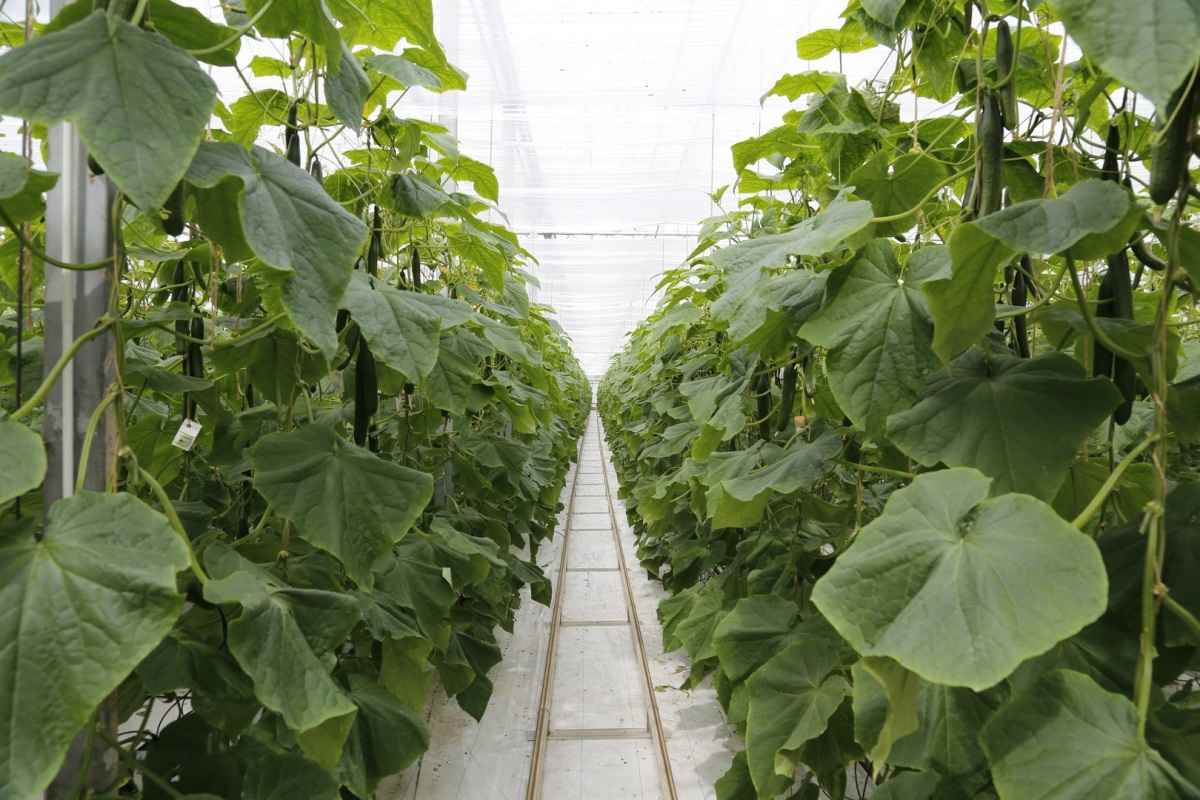
Presenting quality information to our readers is our only purpose below is the list of vegetables that can be grown in the greenhouse and what to grow in a greenhouse in summer.
Easy to grow: Tomatoes, Strawberries, Squash, Beans and Peas, Broccoli, Leafy greens such as Spinach, Kale, Arugula, Microgreens, Herbs, and Artichoke.
High yielding: Lettuce and leafy greens, Cucumber, Rocket Greens, Beans, and Strawberries.
Late winter to early spring: Brussels Sprouts, Cabbage, Lettuce, Onions, Peas, Tomatoes, and Peppers.
Mid-spring: Squashes, Pumpkins, Cucumbers, French beans, Melons, Basil (is one of the perfect small greenhouse vegetables).
Summer: Cucumber, French beans, Melon crops, Parsley, and Eggplant.
Winters: Cabbage, Cauliflower, Peas, Turnips, Leafy greens (Spinach, Lettuce), Chard, Beets, Broccoli, and Carrots.
Planning
The first task is to measure out your greenhouse beds and floor space for grow bags/containers. You must ensure that you have sufficient room to space out all the r greenhouse crops you wish to grow. Benches should offer plenty of space for seedlings.
Sowing seed indoors
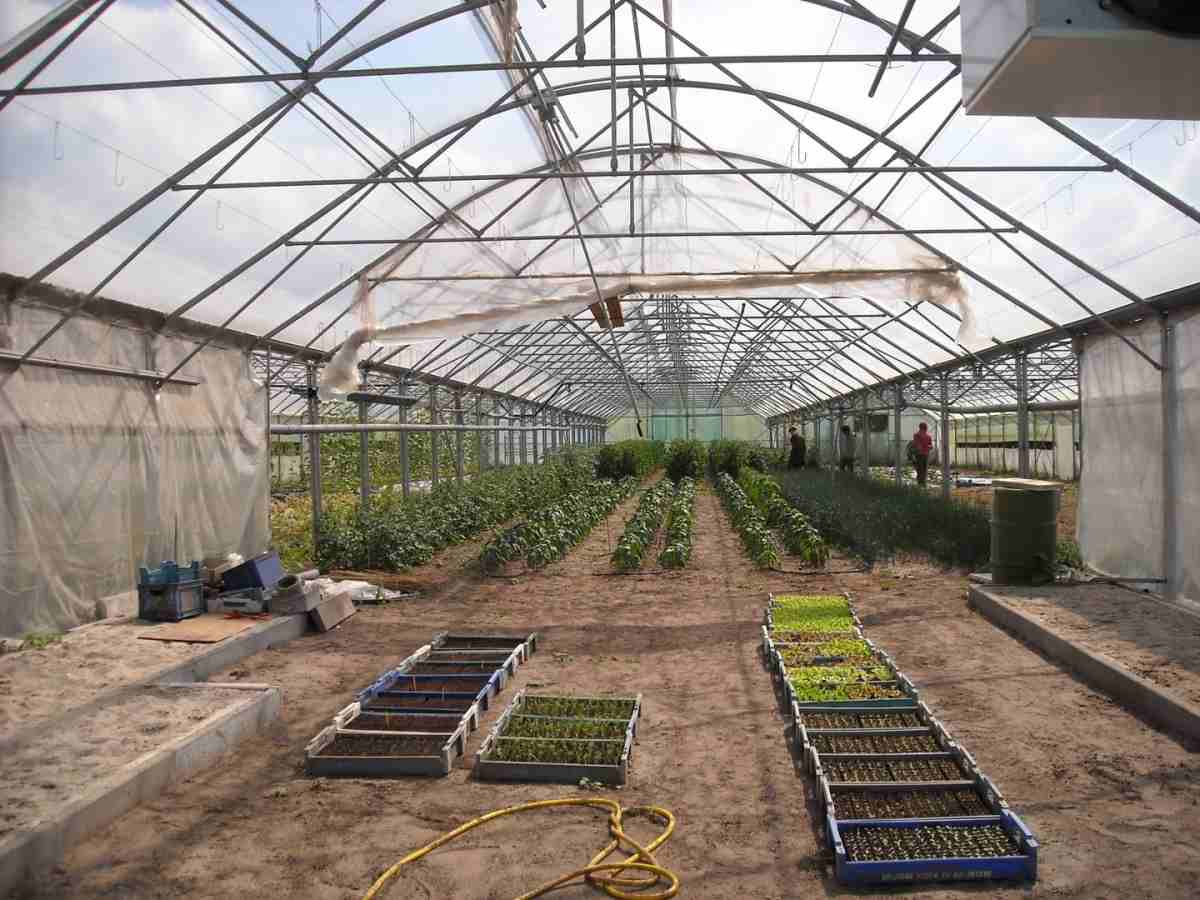
Make use of clean pots and trays and fresh, peat-free seed or multipurpose compost or you must make use of manures rich in organic matter such as coco peat, castor/neem cake, and cow dung or slurry from biogas plants. Adjust the lighting, temperature, and ventilation as per the requirement of crop and be watchful about the growth
Put the seeds or vegetable plants into pots with sterile soil about two-thirds full. Set up the plants so that the tallest ones sit on shelves in the back of the greenhouse; leave sufficient space between crops to let them grow.
Planting
Plant the protected seedlings into greenhouse borders, containers or growing bags as soon as they are sturdy and well-rooted and ready to grow on their own
Care and maintenance
Ensure vining plants such as cucumbers and melons have sufficient anchorage and tie them into strings or canes that are able to bear their weight.
You may also go through this: Growing Button Mushroom at Home.
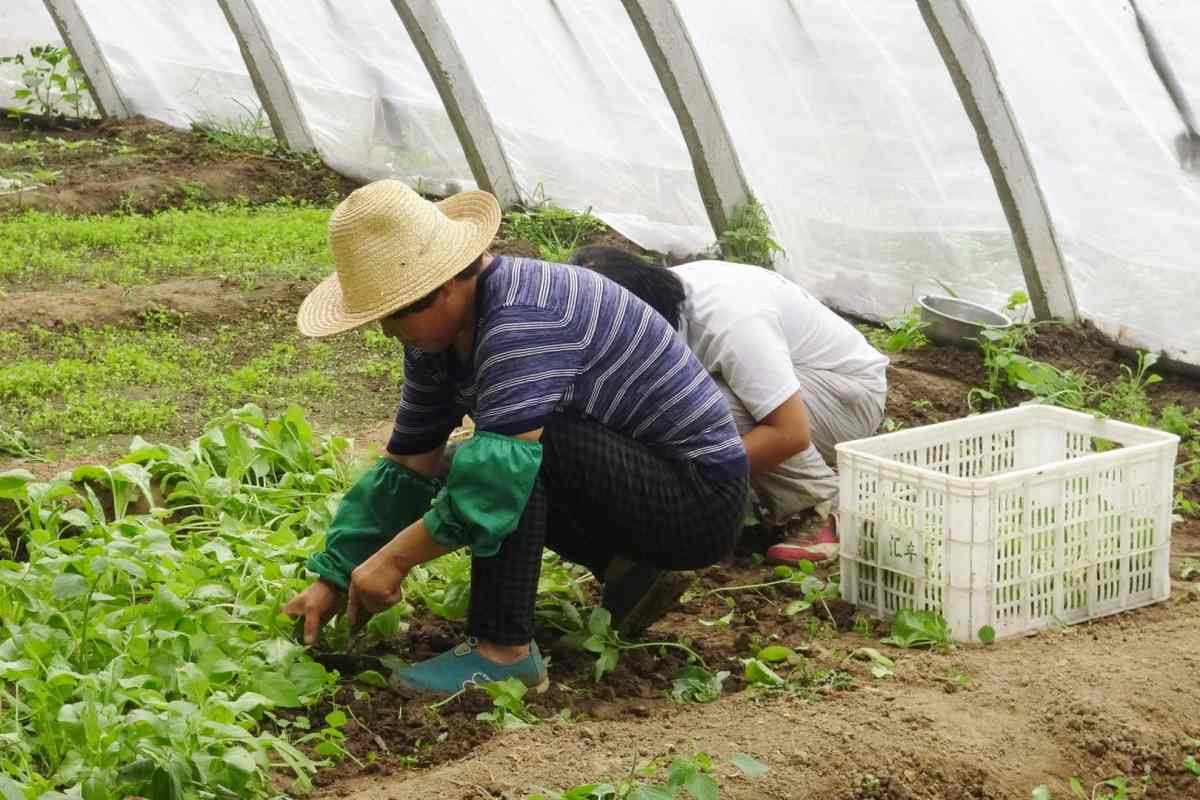
Check watering daily or make use of irrigation channels; uneven watering may result in problems such as flower end rot in tomatoes so be watchful
Ventilate greenhouses during the warm days by opening doors and vents; automatic ventilation is ideal if available
For warmth-loving crops such as okra and cucumbers, vents can be kept closed but humidity must be increased by damping down. Otherwise, partition off a section of the greenhouse by using fleece or clear plastic
Sometimes shading will be required; it is best to put in this gradually because it will initially reduce the growth
Hang yellow sticky traps to provide early warning of pests. Biological controls can then be ordered promptly such as
As the growth progresses tie new growth into supports frequently; pinch off side-shoots of tomatoes to encourage more fruiting than just vegetative growth
Keep structures, especially glazing neat and clean
In heated greenhouses, make sure a thermostat is functioning properly to maintain a minimum night-time temperature especially during winters
Supply a minimum/maximum thermometer to monitor the temperature conditions and its regulation
Pollination
Pollination can be a concern for greenhouse vegetable gardening. Cucumbers will require hand pollination, by taking the male blossom and gently rubbing the female flower at the centre. Tomatoes and peppers are self-pollinating but the flowers must be gently shaken or on a regular basis. Circulation fans are great for promoting pollination.
Organic strategies to counter nutrient deficiencies
Diseases and insect-pest attack in the greenhouse is rare and can be prevented simply by discarding the affected parts or prefer buying seeds with organic certification. But nutrient deficiencies are quite common in greenhouse gardening.
Nitrogen (N) Old leaves start to turn pale green then yellow along with reddish veins and midribs along with Stunted growth. To counter this you can add a fish meal in the compost batch.
Phosphorus (P) deficiency causes stunted growth, dull green leaves with purple tints. To cure this add reactive rock phosphate or extract of guano in solution in the compost
Potassium (K) deficiency will cause small, dark, bluish-green, glossy leaves, curving slightly backward and in old leaves appear with yellow patches and small root systems. To treat add greater amounts of ashes to the next compost batch.
If you are interested in this: How to Make Money from Vegetable Farming.